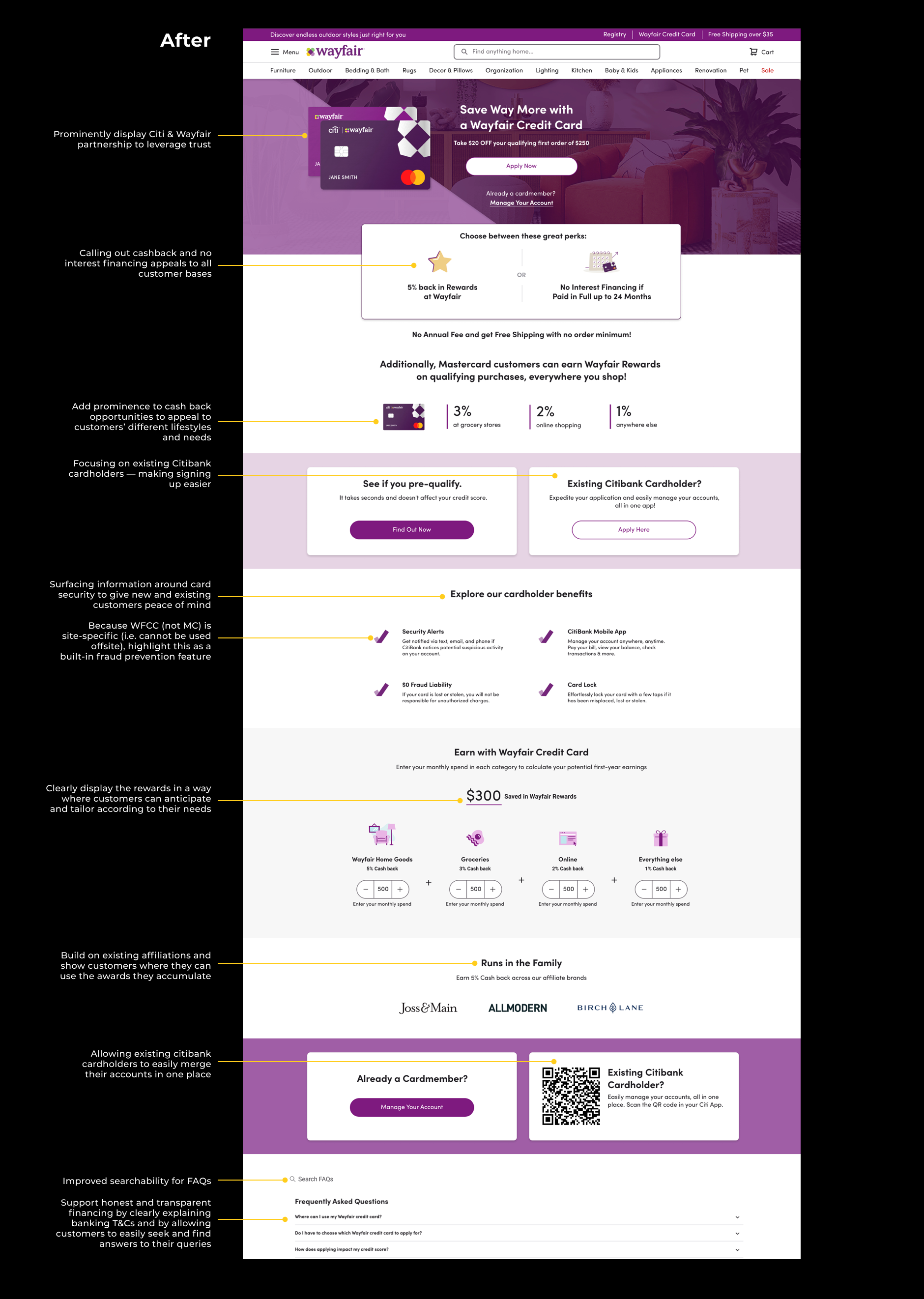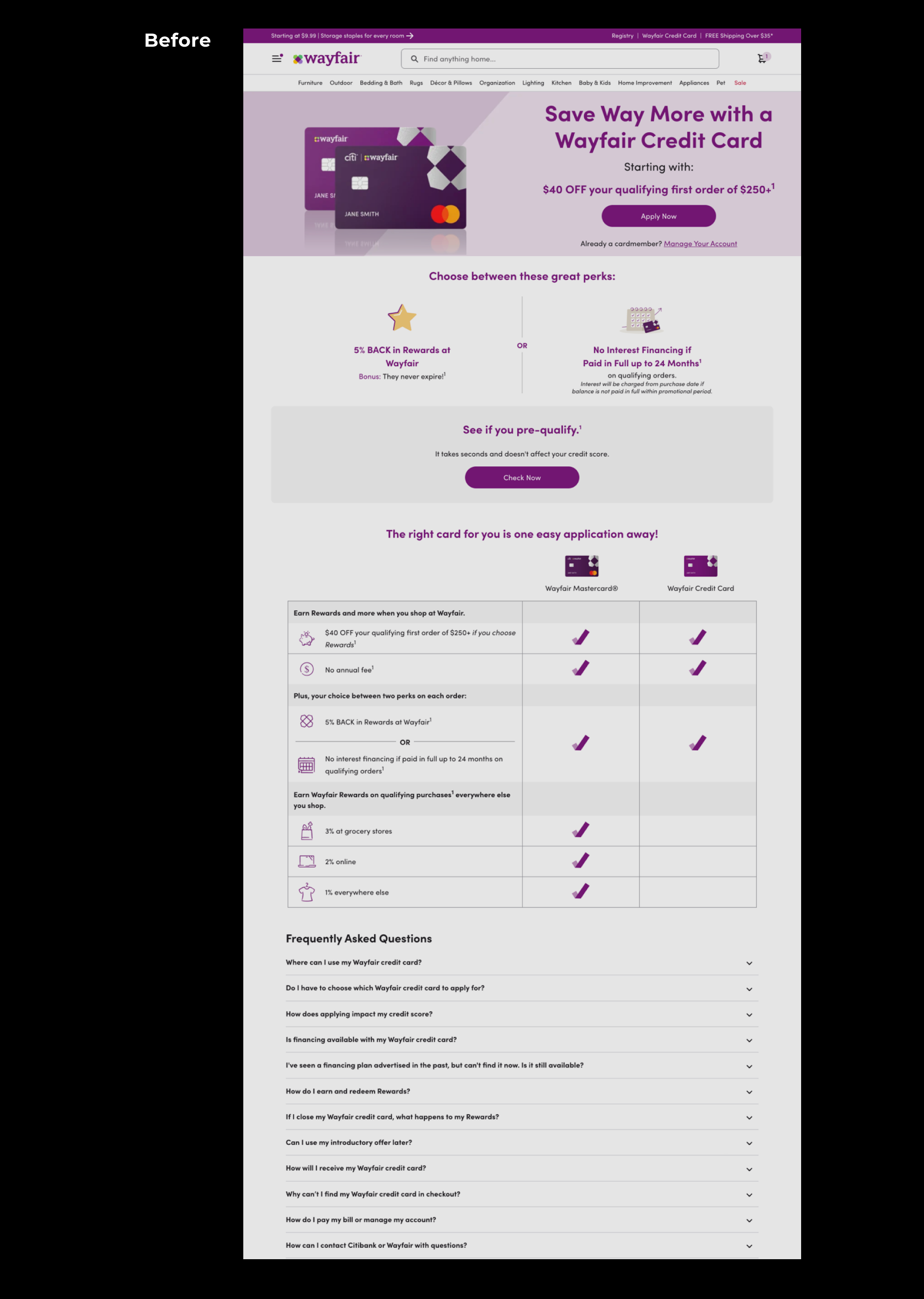UX RESEARCH • DESIGN THINKING • PRODUCT DESIGN
Wayfair Credit Card
my role
ux researcher
senior product designer
primary stakeholders
USER RESEARCH
PRODUCT
ENGINEERING
services
UXR • UX/UI design • product strategy • design thinking
Overview
Boosting credit card acquisition among Wayfair's most loyal customers.
Insight to innovation: A case study on crafting user-centered solutions.
objective
The core business objective was to escalate the acquisition rates of loyal Wayfair customers.
Research Goal
What are the key barriers preventing loyal customers from signing up for the WFCC?
Research parameters
We selected our test group based on specific criteria to ensure relevant and impactful insights:
Customers with high spending and high credit scores.
A history of at least four orders in the past year.
A favorable attitude towards Wayfair.
Methodology
Building upon previous survey data and using an updated research and moderator’s guide, refined through stakeholder workshops, we focused our investigation on specific areas to understand the underlying motivations and concerns of Wayfair customers.
Our research concentrated on six key areas identified as major barriers for our customers when considering credit cards:
Workshop we ran to align with stakeholders on the most important questions for our qualitative research
Data synthesis
The analysis of interview data provided crucial insights, which were shared with stakeholders. This was supplemented with a pre-read document and examples of best-in-class industry practices, serving both as a benchmark and a source of inspiration for our brainstorming sessions.
Example of how we had shared our insights, including relevant video snippets of what our users had to say
Sample of one of the boards we used for our generative workshops. The five sections are:
1. Customer quotes (snippets of what our users said for different themes we had identified)
2. What? (the insights around what we had learned)
3. So what? (what the implications were and how we might address them)
4. Now what? (collectively address how we could improve our experience)
5. Inspiration (how competitors address similar challenges or other best-in-class analogous examples)
Ideation
Generative workshops
In the generative workshop that followed, stakeholders were well-equipped to engage in creative and strategic brainstorming. Leveraging the insights from our research and the inspiring examples from the pre-read, they were able to ideate with a clear understanding of what works in the industry. This helped strategically aligning these ideas with our identified customer needs and business goals. The workshop proved to be a rich exchange of ideas and potential solutions.
Generative workshops addressing all 6 themes we had identified.










